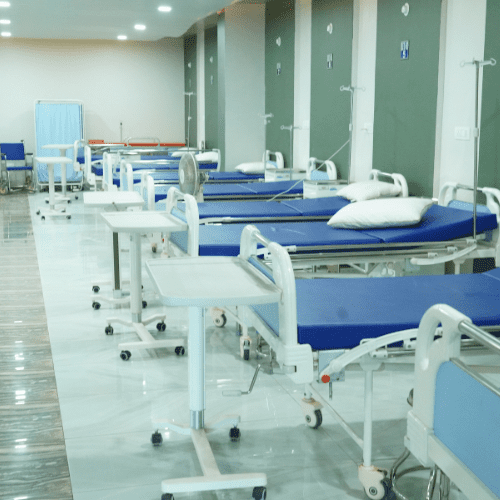India’s healthcare workforce faces a plethora of challenges that threaten the overall efficacy and accessibility of medical services across the nation. With a burgeoning population and a complex array of health issues, the demand for skilled healthcare professionals has never been more urgent. However, systemic issues such as workforce shortages, uneven distribution, and inadequate training create significant hurdles in delivering quality healthcare. In this article, we will explore the current status of healthcare workforce challenges in India, as well as the government’s multifaceted responses aimed at addressing these issues.
An In-Depth Analysis of Healthcare Workforce Challenges in India: Current Status and Emerging Trends
India’s healthcare system is uniquely positioned at the crossroads of rapid population growth, increasing healthcare demands, and a persistently evolving disease landscape. The country’s healthcare workforce faces a multitude of challenges that directly impact the quality of care provided to its citizens. Among the most pressing issues are the shortages of skilled healthcare professionals, particularly in rural and underserved regions, and the uneven distribution of medical practitioners across urban and rural areas. According to various studies, India has a physician-to-population ratio that falls short of the World Health Organization’s recommended standards, which complicates the ability to deliver adequate healthcare services to its vast and diverse population.
Furthermore, the healthcare workforce is not only quantitatively deficient but also qualitatively challenged due to inadequate training and educational resources. The rapid advancement of medical science necessitates ongoing professional development; however, many healthcare providers lack access to continuing education or opportunities for upskilling. This is compounded by systemic issues such as low salaries, poor working conditions, and a lack of job security, which deter potential entrants into the healthcare field. The absence of a supportive environment for healthcare workers can contribute to burnout and attrition, further exacerbating workforce challenges.
Another layer of complexity arises from the social determinants of health, which influence both the demand for healthcare services and the capacity of healthcare workers to meet these needs. For instance, high levels of poverty and illiteracy can hinder health-seeking behavior and the effectiveness of health interventions. These challenges are particularly exacerbated in the wake of the COVID-19 pandemic, which has further strained healthcare resources and highlighted existing disparities in workforce distribution and capability. The Indian healthcare workforce is also characterized by a significant gender imbalance, with a lower representation of women in senior medical roles and leadership positions. This underrepresentation not only limits diversity of thought but also impacts policy-making, thereby affecting the overall efficiency of the healthcare delivery system. Addressing these workforce challenges is essential for the country to achieve its healthcare goals, including the ambitious targets outlined in the National Health Policy.
Government Responses to Healthcare Workforce Challenges in India: Policies, Initiatives, and Future Directions
In response to the multifaceted challenges faced by the healthcare workforce, the Government of India has initiated a range of policies and programs aimed at addressing the critical gaps in human resources for health. Among the most noteworthy initiatives is the National Health Mission (NHM), which aims to provide accessible and affordable healthcare, particularly in rural areas. The NHM has been pivotal in enhancing the capacity of healthcare institutions and increasing the availability of healthcare providers through various recruitment and training schemes. By focusing on strengthening primary healthcare and promoting preventive measures, the NHM plays a crucial role in reducing the burden on secondary and tertiary care facilities.
Additionally, the Indian government has recognized the importance of medical education reform. Legislative measures such as the National Medical Commission Act, enacted in 2019, aim to ensure that medical education is aligned with the evolving healthcare needs of the population. This act establishes a new regulatory framework that emphasizes quality and accountability in medical education, thereby fostering a more competent healthcare workforce. The government has also implemented initiatives to facilitate competency-based assessments and standardized curricula, which are essential steps toward improving the quality of medical education in the country.
Moreover, the government has introduced incentives for healthcare professionals to practice in underserved areas. Initiatives such as the "Swasth Bharat Yatra," which actively promotes health awareness and community health engagement, also play a crucial role in encouraging healthcare workers to serve in rural settings. Financial incentives, scholarships, and loan repayment programs are additional measures aimed at attracting talent to these critical areas. To address the gender disparity in the healthcare workforce, various programs have been implemented to promote women’s participation in medical professions. Special mentorship programs and scholarships targeted at female students in medicine are designed to empower women and help bridge the gender gap in healthcare leadership roles.
Furthermore, the COVID-19 pandemic has catalyzed the adoption of telemedicine and digital health initiatives, which present new avenues for expanding healthcare access and improving workforce utilization. The government has encouraged the integration of technology into healthcare delivery, allowing healthcare professionals to reach remote populations and reduce the burden on overextended healthcare facilities. While these responses signify a positive step toward addressing workforce challenges, there remains a pressing need for coordinated efforts and sustained investment in human resources for health. Future strategies should focus on strengthening the healthcare system’s resilience and capacity to respond to health emergencies while ensuring that the workforce is adequately supported, trained, and distributed.
In conclusion, addressing the healthcare workforce challenges in India is a multifaceted endeavor that requires concerted efforts from both the government and various stakeholders in the healthcare sector. While current initiatives demonstrate a commitment to improving healthcare access and quality, more comprehensive and coordinated actions are necessary to create a sustainable and effective workforce. By focusing on enhancing medical education, incentivizing service in underserved areas, and leveraging technology, India can make significant strides toward a more equitable and efficient healthcare system. As the country aims to fortify its healthcare systems and prepare for future health crises, understanding and mitigating these workforce challenges will be essential for the health and well-being of its diverse population.




